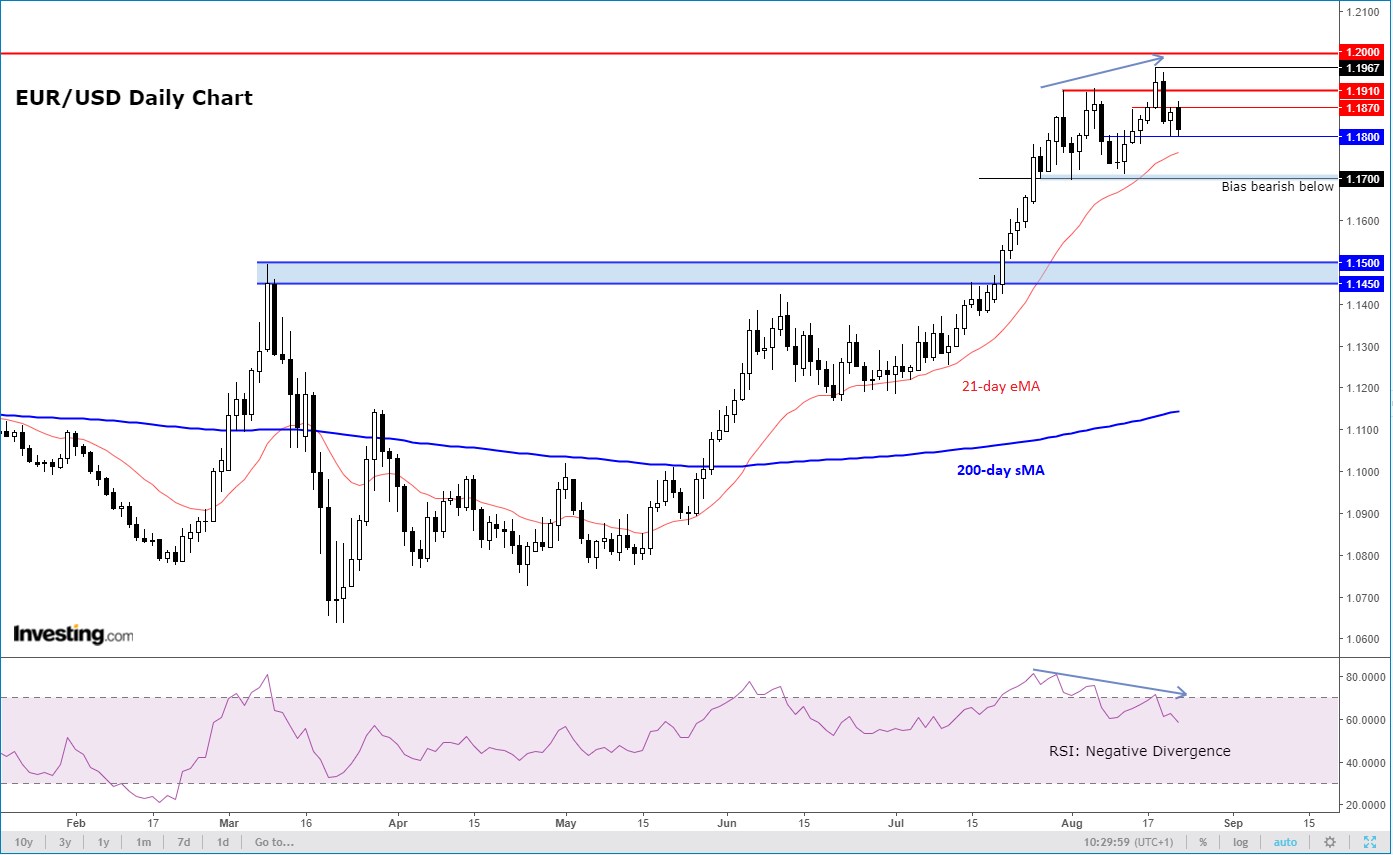This article was written exclusively for Investing.com.
The EUR/USD has fallen back this morning, as fresh PMI data from the Eurozone suggests the resurgences of coronavirus cases in parts of Europe is already impacting the economic recovery. But will one month’s worth of data be enough to completely reverse the single currency's uptrend?
The latest PMI data from France, where Covid-19 cases have risen sharply of late, was particularly weak, with activity at the manufacturing sector shrinking to 49.0 from 52.4 previously. The German services sector PMI also weakened noticeably, down to 50.8 from 55.6. Crucially, however, German manufacturing activity rose to 53.0 from 51.0. So, it wasn’t all doom and gloom. Still, the big drops for French PMIs from their previous readings cannot be ignored.
The renewed weakness in data, if sustained, will raise calls for more stimulus from the ECB and will likely depress haven government bond yields further—especially German bunds. As a result, the EUR/USD may well come under a sustained period of pressure— something which it hasn’t experienced since March.
The euro’s current weakness should, in fact, come as no surprise as I had warned in my previous post on the EUR/USD pair, which I wrote at the end of July. Then the EUR/USD was rising towards long-term resistance around the 1.19-1.20 area. At that time I noted:
“With coronavirus making an unwelcome comeback to parts of Europe, the currency may come under pressure again in August. It is also possible that the dollar could rise from the ashes, as virus cases in the US start to drop and the most populous states open up again.”
That said, it is important to remain objective. While the virus situation in the US is still bad, cases and deaths have indeed started to fall. So, hopefully the worst is behind us in the US anyway.
Sentiment could easily turn positive towards the euro again should economic activity rebound or an effective vaccine become available. So, the rally may continue for a while yet, even if rates have struggled this week.
What we need to see from a bearish point of view is a clear technical reversal formation to suggest a top has indeed been formed.

For me, a clear bearish sign would be a break beneath prior lows around 1.1695-1.1700 area, for if this happens the series of higher lows will end and will provide an objective signal that the bulls might be in trouble. In this potential scenario, I would then expect rates to drop to test old resistance around the 1.15 handle and potentially further lower over time.
However, if the above bearish scenario does no play out and we go back above the 1.19 handle on a daily closing basis, then we may very well see some follow-up technical buying towards the psychological 1.20 handle next.
So, it is a “IF/THEN” situation for the EUR/USD. While it is certainly looking weak today, try not to pre-empt a big drop and remain objective and nimble. Watch price action closely and if it is not doing what it “should” be, then try not to fight it.
